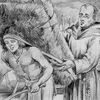Introduction
In early 2002, the Georgetown University Art Collection received an unexpected gift of more than one-hundred religious-image drawings by John Watson Davis (1870 - 1959). The drawings were given by the artist's youngest and sole surviving child, Adele Davis Durant, and her son and daughter-in-law, Paul and Jackie Dienemann. (Mrs. Dienemann is an adjunct professor with the School of Nursing and Health Studies.)
These pencil drawings with occasional touches of white gouache, many of which were preparatory studies for publications of the Society for the Propagation of the Faith and other organizations, augment the Art Collection's holdings of work by U.S. artists, and of art significant to the University's Catholic heritage. As preparatory studies, many of the drawings contain editorial comments in the margins; this provides insight into the creative processes of an artist working from life models and adapting his work to paintings to be used for mass-produced color printing.
The drawings are all on newsprint-a reasonable choice for a prolific commercial artist, but problematic for a curator and conservator. Inexpensive and lightweight, with its relatively smooth surface the paper can capture the range of impressions made by heavy- and light-weight pencil lead, while also being sturdy enough to absorb gouache (opaque watercolor) where applied. However, with its high acidic content, newsprint will inevitably fade and disintegrate, particularly when exposed to light. Consequently, the drawings range from fine to very poor condition; some that might have been shown due to their artistry or historical significance had to be omitted because of their fragility.
John Watson Davis had a career for six decades as an illustrator; in addition to his religious commissions, his drawings appeared in Zane Grey novels, in editions of Sherlock Holmes tales and Bluebeard, and in other books and magazines. His father was John Steeple Davis, also a book illustrator. Born in New York, Davis moved with his family to Paris when he was ten years old, where he received his art training. This was a time when many artists from North America and elsewhere flocked to Paris, then the pre-eminent city for the visual arts, to study with masters in schools that emphasized rendering of the human form.
Davis returned to Brooklyn when he was in his twenties, and began his commercial artist career. To avoid confusion with other artists named "John W. Davis," he began signing his work "J. Watson Davis." He married Agnes Danforth, with whom he had four children; they subsequently moved to Hollis, New York. Davis was living in California at the time of his death.
- David C. Alan, Art Technician and Curator for the Exhibit
The Georgetown University Art Collection is grateful to Mrs. Durant and to the Dienemanns for their generous donation.
Biographical information on the artist was supplied by Mrs. Durant.
Select historical information from the Catholic Encyclopedia.
Donors to the Exhibit
- Adele Davis Durant; Tustin, California
- Paul and Jackie Dienemann; Davidson, North Carolina
- The Missionary Oblates of Mary Immaculate; Belleville, Illinois and Washington, D.C.
Lender to the Exhibit
Carole Monaghan; Tustin, California
Drawings on the Web site and in related publications are reproduced courtesy Adele Davis Durant, and Paul and Jackie Dienemann.
Later Historical Missionary Activity
Calendar 1948 [Christ Preaching to the Peoples of the World]
John Watson Davis, United States; 1870 - 1959
Pencil on newsprint
13 5/8 x 8 3/4 inches
This drawing was a study for the 1948 calendar cover. Davis used stereotypical traditional dress to represent the peoples of Africa, southern Asia, east Asia, and the indigenous Americas, as well as a man in a western business suit. A notation on the drawing suggests, "turn figure of Indian-show face profile," a change that was made for the final painting. The pose of the enthroned Christ, and his hand gestures, originated in early Christian and medieval pictorial conventions.
The Society for the Propagation of the Faith
Illustrations by J(ohn) Watson Davis
Color photographic offset on coated paper
8 1/16 x 5 9/16 inches
Calendar 1948
Springfield, Massachusetts; 1947
University Purchase, 2002
Philippines - Manilla [sic] Cathedral
John Watson Davis, United States; 1870 - 1959
Pencil on newsprint
8 1/2 x 13 inches
The French Charles-Martial-Allemand Lavigerie (1825 - 1892) was Archbishop of Algiers, leading efforts to convert the Moslem Arabs, and to abolish slavery in Africa. From the March 1948 Calendar: "His Eminence, Charles Cardinal Lavigerie, after successful clerical teaching in France, was appointed Archbishop of Algiers in 1867, and began his apostolate among the Moslems of northern Africa. He founded the White Fathers and the Missionary Sisters of Our Lady of Africa, who continue his work today." (Author unknown.)
Archbishop Salazar, Dominican Archbishop of Manila, at the consecration ceremonies of his Cathedral
John Watson Davis, United States; 1870 - 1959
Reproduction of illustration from The Society for the Propagation of the Faith, Calendar 1948 (January); Springfield, Massachusetts; 1947
Location of original painting unknown
Cardinal Lavigerie in Algiers
John Watson Davis, United States; 1870 - 1959
Pencil on newsprint
8 1/2 x 13 inches
The French Charles-Martial-Allemand Lavigerie (1825 - 1892) was Archbishop of Algiers, leading efforts to convert the Moslem Arabs, and to abolish slavery in Africa. From the March 1948 Calendar: "His Eminence, Charles Cardinal Lavigerie, after successful clerical teaching in France, was appointed Archbishop of Algiers in 1867, and began his apostolate among the Moslems of northern Africa. He founded the White Fathers and the Missionary Sisters of Our Lady of Africa, who continue his work today." (Author unknown.)
Charles Cardinal Lavigerie feeding the Arab orphans of Algieria
John Watson Davis, United States; 1870 - 1959
Reproduction of illustration from The Society for the Propagation of the Faith, Calendar 1948 (March); Springfield, Massachusetts; 1947
Location of original painting unknown
Jesuit Missionary instructing the natives of Paraguay in cultivation
John Watson Davis, United States; 1870 - 1959
Pencil on newsprint
8 1/2 x 13 inches
The setting is from the Paraguay Reductions, Jesuit missions to the indigenous South Americans from the sixteenth to eighteenth centuries. From the 1948 Calendar: "The Paraguay Reductions were actually missionary settlements for the Indians in which the missionaries labored to protect the natives from exploitation by the European colonists. They were complete units in themselves, numbering from 500 to 7,000 inhabitants. Agricultural training, cattle raising, as well as the arts and sciences were taught and the Reductions became Christian communities where the work and the profits were shared. The expulsion of the Jesuits from South America closed these great centers of mission achievements." (Author unknown.)
A note in the margins by an unknown hand reads, "Where lake is indicate trim, neat rows of adobe homes, with tile roofs. Church scene to dominate center." This detail and a slightly higher perspective adds to the sense of open space in the calendar illustration.
The Paraguay reductions were one of the outstanding missionary achievements in South America
John Watson Davis, United States; 1870 - 1959
Reproduction of illustration from The Society for the Propagation of the Faith, Calendar 1948 (May); Springfield, Massachusetts; 1947
Location of original painting unknown
Father Peter John de Smet - about 1865
John Watson Davis, United States; 1870 - 1959
Pencil on newsprint
8 1/2 x 13 inches
Father Peter John (Pierre-Jean) de Smet (1801 - 1873) was a Belgian Jesuit missionary to the indigenous peoples of the western United States. From the 1948 Calendar: "The Rev. Peter de Smet, S.J., one of the founders of the Missouri Province of the Jesuits, labored over fifty years to bring peace to the warring tribes and to the white settlers as well. He was the only white man who could go in safety among the powerful Sioux tribe, and was greatly respected by government officials of our own country." (Author unknown.)
A note in the margins by an unknown hand reads, "Have chapel in place of the cavalry officer, who is to be shown lying on the ground." A comparison with the illustration that was used in the 1948 calendar shows the changes incorporated, enhancing the drama of Father de Smet intervening to save the officer's life. Georgetown University's Special Collections has a distinguished collection of letters and books from Father de Smet.
Early Historical Missionary Activity
Calendar 1950 [Christ Preaching]
John Watson Davis, United States; 1870 - 1959
Pencil on newsprint
22 3/4 x 16 inches
This drawing of Jesus preaching to the Apostles, for the cover of the 1950 calendar of the Society of the Propagation of the Faith, is the largest in Georgetown's J. Watson Davis collection.
St. Matthew leaves his tax collectors post to follow Jesus
John Watson Davis, United States; 1870 - 1959
Pencil on newsprint
8 1/2 x 13 inches
This scene, from Matthew 9:9, Mark 2:14, and Luke 5:27-28, was perhaps most famously depicted by Michelangelo Merisi da Caravaggio in 1599 (Contarelli Chapel, Rome); Luca Giordano's 1700 version (shown below) is one of the most important works in the Georgetown University Art Collection, and is on view in Carroll Parlor (Healy Hall Room 107). Unlike those Italian Baroque renditions, which focus on the moment of Jesus choosing his new Disciple ("follow me"), J. Watson Davis' drawing emphasizes the choice Matthew makes as he rose to abandon his earthly vocation (in shadows at the left) for his new calling (illuminated at right). Jesus identifies his new follower not with a dramatic arm gesture, but with a subtle turn of his head.
The Calling of St.Matthew
Luca Giordano, Naples; 1634 - 1705
Oil on canvas
78 1/2 x 100 1/2 inches
University Purchase, 1860
Philip baptizing the Queen's Eunich [sic] in the desert
John Watson Davis, United States; 1870 - 1959
Pencil on newsprint
8 1/2 x 13 inches
The episode is from Acts 8:36-38.
St. Barnabas defends St. Paul before the Disciples
John Watson Davis, United States; 1870 - 1959
Pencil on newsprint
8 1/2 x 13 inches
The Episode is from Acts 9:27.
Sts. Simon and Jude entering the land where they forfeited their lives
John Watson Davis, United States; 1870 - 1959
Pencil and gouache on newsprint
8 1/2 x 13 inches
Legend holds that Simon and Jude were martyred in Persia.
1946 Calendar [Christ in the Field]
John Watson Davis, United States; 1870 - 1959
Pencil on newsprint
16 3/4 x 11 5/8 inches
This drawing, the study for the cover of the 1946 calendar, possibly depicts the episode of Jesus and his followers gathering harvest on the Sabbath (Matthew 12:1, Mark 2:23, Luke 6:1).
Architectural Montage
The Work of the Holy Childhood Association
John Watson Davis, United States; 1870 - 1959
Pencil on newsprint
15 x 9 3/8 inches
The Association was founded in France in 1843, with aims similar to the Society for the Propagation of the Faith, emphasizing service to children in need.
Contemporary Missionary Activity
Sisters caring for Wounded in China
John Watson Davis, United States; 1870 - 1959
Pencil on newsprint
8 1/2 x 13 inches
For the March 1949 calendar.
Bishop feeding the hungry in India
John Watson Davis, United States; 1870 - 1959
Pencil on newsprint
8 1/2 x 13 inches
For the April 1949 calendar.
First Communion in Africa
John Watson Davis, United States; 1870 - 1959
Pencil on newsprint
8 1/2 x 13 inches
For the June 1949 calendar.
The Bishop and his little Chinese flock
John Watson Davis, United States; 1870 - 1959
Pencil on newsprint
8 1/2 x 13 inches
For the September 1949 calendar.
Fantasy-Geography
Our Lady of the Snows
John Watson Davis, United States; 1870 - 1959
Pencil and gouache on newsprint
8 1/6 x 12 3/4 inches
Based on a legend originating in Rome in the fourth century C.E., Our Lady of the Snows has acquired a following in Canada and other places. Stylistically similar to the "fantasy-geography" drawings, Our Lady of the Snows also relates to actual important circumstances in the artist's career. Early in the 1940s, Davis painted a version of Our Lady of the Snows for St. Henry's Seminary in Belleville, Illinois. Sources are unclear as to whether Davis was commissioned to complete the painting or asked as a personal favor; but he was acquainted with Father Paul Schulte, O.M.I., a German immigrant known as the "flying priest of the Arctic," for personally flying a plane to reach peoples of northern Canada and Alaska with his missionary work. Father Schulte introduced devotion to Our Lady of the Snows in Belleville. In the painting, a reproduction of which is shown, Davis has elevated Mother and Child above the surrounding figures in a vertical composition, in which the vision emanates from the Northern Lights; Fr. Schulte's plane appears as an element in the painting. The painting now hangs in the Mary Chapel of the National Shrine of Our Lady of the Snows in Belleville.
Our Lady of the Snows
John Watson Davis, United States; 1870 - 1959
Tempera
Mary Chapel; National Shrine of Our Lady of the Snows; Belleville, Illinois
Queen of the Missions - U.S.
John Watson Davis, United States; 1870 - 1959
Pencil and gouache on newsprint
7 3/4 x 12 3/4 inches
Part of a group of drawings from Georgetown's J. Watson Davis collection that might be called "fantasy-geography," Queen of the Missions - U.S. is significant for this exhibit with its references to the Capitol and the Washington Monument in its panoramic montage of landmarks from the United States. Two are dated 1941; because of the similarity in style and conception, it is guessed that all are from approximately the same era.
John Watson Davis As Book Illustrator
The King of the Golden City; An Allegory for Children by Mother Mary Loyola
Illustrated by J(ohn) Watson Davis (United States; 1870 - 1959)
New York: P. J. Kenedy & Sons
On loan for the exhibit from Carole Monaghan; Tustin, California
Davis produced eight illustrations, probably originally in watercolor, for the book; his daughter Adele was the model for the young girl, Dilecta. Davis' work is not credited on the title page; this copy is inscribed by hand, "Illustrated by J. Watson Davis."
Which One Are You? A Conscience Book for Little Folks by Hiram Hunter
Illustrated by J(ohn) Watson Davis (United States; 1870 - 1959)
New York: The Little Folks Publishing Co., Inc.
On loan for the exhibit from Carole Monaghan; Tustin, California
Series 15: The Girl who Has No Faith; Series 16: The Girl Who Has Faith
This book uses a series of contrasting vignettes, each illustrated with an ink drawing by Davis, to teach moral lessons (e.g. "The Dishonest Boy/The Honest Boy - Which one are you?"). The book is inscribed "1918/Merry Christmas/with best wishes from the author" and "To Dell/from 'Dad' "; Dell is Adele Davis Durant, the artist's daughter and the donor of the drawings in this exhibit.
Historical Missionary Activity
Sisters of the Visitation Watching the burning of Washington
John Watson Davis, United States; 1870 - 1959
Pencil on newsprint
8 1/2 x 13 inches
This drawing is of particular interest to Georgetown University, as the Sisters of the Visitation convent is a few blocks from campus. The episode is from August 1814, when the British set fire to Washington in retaliation for the burning of York (now Toronto) by United States. The unfinished White House and Capitol were damaged; President and Mrs. Madison had fled prior to the British army's arrival.
The Sisters of Providence arriving at New York Sept. 5 1840
John Watson Davis, United States; 1870 - 1959
Pencil on newsprint
8 1/2 x 13 inches
The voyage began in Brittany.
The Sisters of Mercy - "Chicago fire 1871"
John Watson Davis, United States; 1870 - 1959
Pencil on newsprint
8 1/2 x 13 inches
The fire destroyed their convent.
The Venerable Marguerite Bourgeoys
John Watson Davis, United States; 1870 - 1959
Pencil and gouache on newsprint
8 1/2 x 13 inches
Marguerite Bourgeoys (1620 - 1700) was one of the early religious leaders of the mission at Ville-Marie (now Montréal). The drawing also depicts Kateri Tekakwitha (1656 - 1680), an Iroquois orphan who took her vows near Montréal in 1679.
[Father He]nnepin discovering the Falls of Niagara
John Watson Davis, United States; 1870 - 1959
Pencil on newsprint
8 1/2 x 13 inches
Father Louis Hennepin's (ca. 1640 - ca. 1701) expedition saw Niagara Falls in 1678.
The following persons are acknowledged for their support for and assistance with this exhibit:
University Librarian Artemis G. Kirk; Associate University Librarian for Special Collections Marty Barringer; Art Collection Coordinator LuLen Walker; Curator of Prints Emeritus The Reverend Joseph A. Haller, S.J.; The Reverend Joseph N. Tylenda, S.J., Director of the Woodstock Theological Library; Sister Mary Agnes Schlather, Marketing Department, National Shrine of Our Lady of the Snows; The Reverend Allan Maes, O.M.I., National Shrine of Our Lady of the Snows; Douglas C. Speeckaert, Archivist, Missionary Oblates of Mary Immaculate, United States Province; Gifts Librarian Elizabeth Smith; Manuscripts Librarian Nicholas B. Scheetz; Director of Development Marji Bayers; Development Assistant Stephanie S. Hughes; Interim Development Coordinator Caroline W. Griswold
Matting by Frames By Rebecca; Silver Spring, Maryland
Graphic Artist David Hagen and the staff of the Library's Audio-Visual Learning Resource Center provided color graphics and photographs

![Calendar 1948 [Christ Preaching to the Peoples of the World]](/sites/default/files/images/religious_drawings__t_davis_calendar_1948_1947.gif)
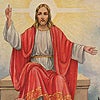
![Philippines - Manilla [sic] Cathedral](/sites/default/files/images/religious_drawings__t_davis_philippines_1947.gif)
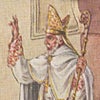
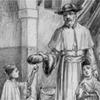
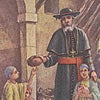
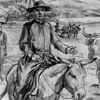
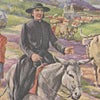
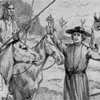
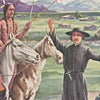
![Calendar 1950 [Christ Preaching]](/sites/default/files/images/religious_drawings__t_davis_calendar_1950_1949.gif)
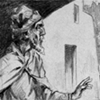
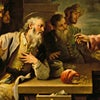
![Philip baptizing the Queen's Eunich [sic] in the desert](/sites/default/files/images/religious_drawings__t_davis_philip_desert_1949.gif)
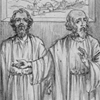
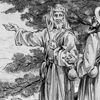
![1946 Calendar [Christ in the Field]](/sites/default/files/images/religious_drawings__t_davis_1946_calendar_1945.gif)
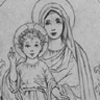
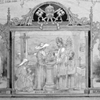
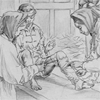
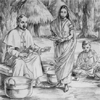
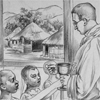
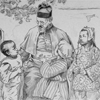
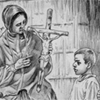
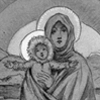
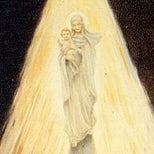
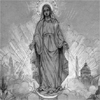
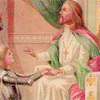
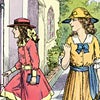
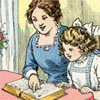
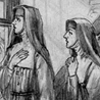
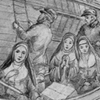
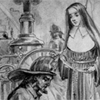
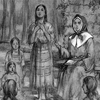
![[Father He]nnepin discovering the Falls of Niagara](/sites/default/files/images/religious_drawings__t_davis_hennepin_nd.gif)
